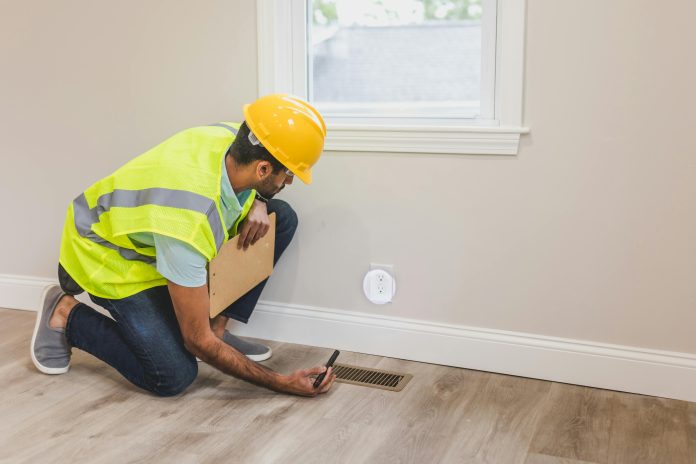Replacing a roof is one of the most significant home improvement projects homeowners face. It’s a substantial investment that affects not only the structural integrity of your home but also its curb appeal and overall value.
Whether your roof has aged beyond repair, suffered damage from harsh weather, or simply needs an upgrade, proper planning is essential to ensure the process goes smoothly. Before diving into this project, it’s important to understand the steps involved, the costs to expect, and the decisions you’ll need to make along the way.
This guide will walk you through 10 critical considerations to keep in mind before replacing your roof, helping you avoid costly mistakes and achieve a durable, high-quality result.
1. Assess the Condition of Your Roof

Before committing to a full roof replacement, carefully evaluate the current condition of your roof. Look for obvious signs of wear and tear, such as missing or curled shingles, leaks, dark spots, and sagging areas. If the damage is localized, repairs might suffice.
However, widespread deterioration may indicate the need for replacement. Hiring a professional roofing inspector can provide an accurate assessment and help you make an informed decision.
2. Understand Roofing Material Options
Roofing materials vary widely in durability, appearance, and price. Asphalt shingles are among the most affordable and commonly used, but they typically have a shorter lifespan than alternatives like metal or tile. When installed by an experienced metal roofing company, metal roofing is highly durable, energy-efficient, and environmentally friendly, making it a great long-term option.
Tile and slate roofs are aesthetically pleasing and extremely long-lasting, although they come with higher costs and weight considerations. When choosing materials, factor in your climate, home style, and budget to select the best fit.
3. Plan for Weather and Timing

Timing plays a crucial role in roof replacement. Scheduling the project during the right season can help avoid weather-related delays and ensure a higher-quality installation. Spring and fall generally provide the most favorable conditions—mild temperatures and minimal rain. If you need an emergency replacement, discuss weatherproofing options with your contractor to protect your home during unexpected weather changes.
4. Budget for the Entire Project
Roof replacement costs can quickly add up, especially when unexpected repairs arise. Obtain detailed estimates from multiple contractors to understand the scope of work and pricing. Factor in material costs, labor, permits, and disposal of old roofing materials. It’s also wise to set aside an additional 10-20% of your budget for unforeseen expenses, such as rotting wood or structural damage that needs attention.
5. Hire a Reliable Roofing Contractor
Selecting the right contractor can make or break your roofing project. Look for licensed, insured professionals with experience in roof replacements. Read online reviews, ask for referrals, and verify their track record with the Better Business Bureau. Request detailed quotes and contracts that outline the timeline, costs, and materials to avoid misunderstandings later.
6. Obtain Permits and Inspections
Roof replacements often require permits to comply with local building codes. Check with your municipality to determine what’s required and ensure your contractor handles the necessary paperwork. Inspections during and after the project may also be mandated to verify compliance and safety. Staying on top of permits and inspections prevents fines and keeps the process on track.
7. Consider Energy Efficiency

Replacing your roof is a perfect opportunity to improve your home’s energy efficiency. Modern materials, such as reflective shingles, can reduce heat absorption and lower cooling costs. Additionally, upgrading insulation and ventilation systems during the project helps regulate indoor temperatures and prevent moisture buildup, protecting your roof and improving comfort. Furthermore, you can do some research into cool roofing materials and options.
8. Understand Warranty Coverage
Roofing warranties can vary significantly depending on materials and workmanship. Material warranties often cover defects for 20 to 50 years, while workmanship warranties protect against installation errors for shorter periods. Carefully review what’s included, and clarify whether warranty coverage transfers to future homeowners if you decide to sell.
9. Prepare Your Home
Roof replacements are noisy and messy projects, so preparing your home is essential. Remove valuable items from walls and ceilings to prevent damage from vibrations. Cover furniture and belongings in your attic, and clear outdoor spaces around your home to protect landscaping and allow workers to move freely. Communicate with neighbors to minimize disruptions and maintain good relationships.
10. Think About Long-Term Maintenance
Once your new roof is installed, regular maintenance is key to maximizing its lifespan. Schedule annual inspections to identify and address minor issues before they become major problems. Clean gutters, trim overhanging branches and watch for signs of wear. Investing in maintenance now can save you money and extend the longevity of your roof.
Final Thoughts
Replacing your roof is a major investment, but it’s one that can add significant value, safety, and aesthetic appeal to your home. By taking the time to assess your roof’s condition, research materials, and work with trusted professionals, you can ensure a smooth and successful project.
Planning for unexpected costs, understanding warranties, and thinking about long-term maintenance will help protect your investment for years to come. Whether you’re dealing with storm damage or simply updating an aging roof, these tips will guide you toward a smart and informed decision that keeps your home protected and looking great.










